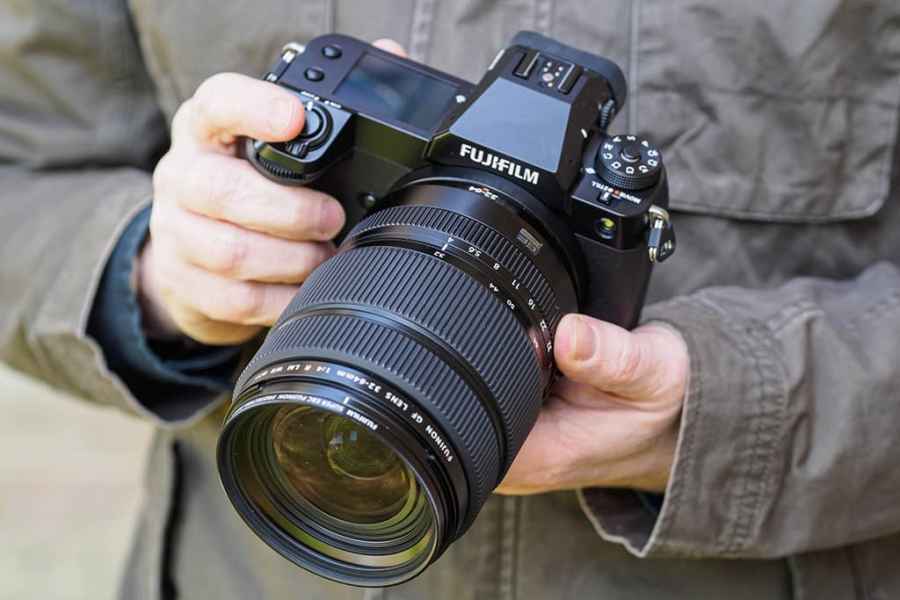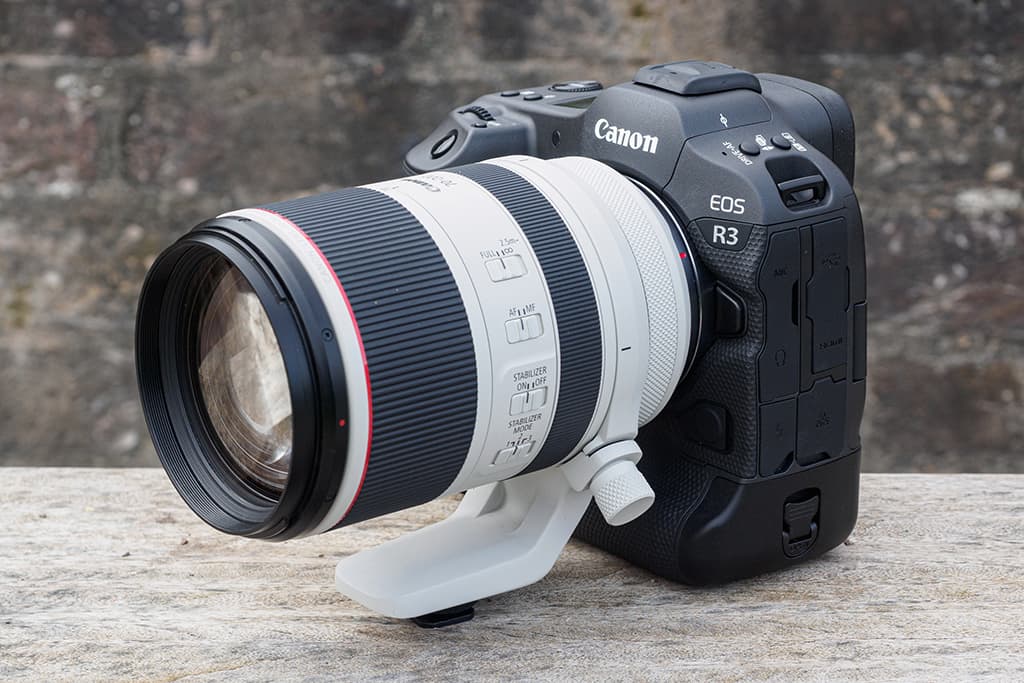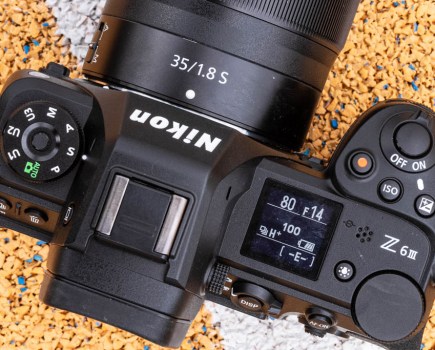Andy Westlake takes a look back at the cameras and lenses introduced in 2021 and reflects on the year’s trends
At the end of each year, we like to take a look back at the new cameras and lenses that have been introduced and tease out some trends. Of course, 2021 has been a year unlike any other. With the Covid crisis in its second year, a global microchip shortage and widespread disruption to supply chains, fewer new cameras have been launched than at any time since 1998, when multi-megapixel digicams started to take off.
The question of what kind of camera you’re expected to buy appears to have shifted, too. It’s no longer between compact, DSLR or mirrorless, but instead about what size sensor you’d like in your new mirrorless camera. Let’s dig into the numbers more deeply.
At the time of writing, we’ve seen just 16 new cameras in 2021. Of these, only one was a DSLR and one a compact camera, both from the same company: the Pentax K-3 Mark III and the Ricoh GRIIIx. Of the mirrorless models, two were medium format, five full-frame, four APS-C, and two Micro Four Thirds.
The most affordable entry-level cameras came with asking prices of £750 or more, while the majority cost over £1,500. In part, this reflects the fact that we’ve seen a lot of innovative top-spec professional models, including the Canon EOS R3, Fujifilm GFX100S, Nikon Z 9 and Sony Alpha 1. Even so, it’s no wonder the second-hand market is booming.
While it’s no shock to find mirrorless dominating, the apparent decline of the enthusiast-focused advanced zoom compact camera is more of a surprise. But if we disregard Sony’s ZV-1 ‘vlog camera’, the last round of new models appeared in July 2019. Hopefully Canon, Panasonic and Sony have simply decided that their existing offerings are fine for now and will update them in future. It would be sad to see this breed suffer the same fate as their point-and-shoot counterparts and go extinct at the hands of the smartphone.
More lenses than ever
In contrast, new lenses were introduced at record pace. By my count, of 68 new optics from mainstream makers, 59 were for mirrorless, including 39 for full frame. At the same time, at least 60 DSLR lenses quietly disappeared from the market. So while there were more lenses available for DSLRs than mirrorless cameras at the start of the year, that balance has now switched the other way.
In 2021 we also finally said goodbye to the Alpha mount. Noteworthy for being the basis of the world’s first practical autofocus SLR, the Minolta Dynax 7000, in 1985, it was taken over by Sony in 2006. But the writing was on the wall when five years later, the firm introduced the mirrorless E-mount.
Sony has to be given credit for continuing support for a decade, but all A-mount products are now officially discontinued. Existing lenses can at least still be used on Sony’s E-mount cameras. Read on for our pick of the best new products we got our hands on in 2021.
Cameras
Canon EOS R3
l £5,879 l www.canon.co.uk

Why we like it
l Revolutionary eye-control autofocus
l Superb design and handling
l Excellent user interface
Once in a while, a camera comes along that feels completely revolutionary, by transforming how easily you can get the pictures you want. One such model is the Canon EOS R3. By resurrecting a decades-old technology in eye control AF, but now combining it with the firm’s excellent AI-based subject detection and tracking, this camera allows you to select the subject that you want to track focus on, simply by looking at it in the viewfinder.
It’s difficult to overstate just what a difference this makes for shooting fast-paced action, when you need to be able to select quickly and intuitively between several possible subjects. The recognition system works with humans, animals, or motor vehicles, but any kind of subject can be tracked based on colour and pattern.
What’s more, this impressive technology has been built into a stupendously quick camera with robust build and excellent handling. It can shoot full-resolution 24MP raw files at 30 frames per second, and boasts a world-record fastest shutter speed of 1/64,000sec that’ll freeze almost any action.
Built-in 5-axis image stabilisation helps keep pictures sharp and free of shake, no matter what lens you use. In terms of handling, the EOS R3 generally behaves very much like the firm’s other high-end cameras. But Canon has thought very hard about the user interface and made its clever AF technology remarkably easy to control. Tracking can be turned on or off at the touch of a button, and it’s quick and easy to select between the various subject types from the onscreen Q Menu. This all adds up to a remarkable camera that feels like a glimpse of the future.
Fujifilm GFX100S
l £5,499 l www.fujifilm.com/uk/en

Why we like it
l Phenomenal image quality
l Compact for medium format
l Remarkably easy to use
This year, it feels like many of the major manufacturers pulled out all the stops to produce the best cameras they possibly could. In Fujifilm’s case, this wasn’t about speed and autofocus but delivering outright image quality in a portable package, with the extraordinary GFX100S. In the past, high-resolution digital medium format cameras were large, clunky, and difficult to use, while being unaffordable to almost anybody.
But Fujifilm has taken the best bits from its two-year-old GFX100, including the superb 102MP sensor, and squeezed them into a smaller body that’s much the same size as a full-frame DSLR. It’s also little more than half the GFX100’s price, which places it in the same ballpark as the latest high-end full-frame cameras.
You’d think this would inevitably bring some major compromises, but in truth, there are barely any at all. The electronic viewfinder is slightly smaller and lower in resolution, but that’s about it. Indeed Fujifilm has improved several aspects of the the design, making the GFX100S as simple and straightforward to shoot with as any other modern mirrorless camera.
In fact the firm has made it remarkably easy to get the most from all those pixels, thanks to a soft, low-vibration shutter and 5-axis in-body image stabilisation, which means you don’t have to use a tripod all the time. This is backed up by the stunning line-up of GF lenses. And if the £5,499 price tag is still too rich, Fujifilm also released the GFX50S II with a 50MP sensor in the same body, but for £2,000 less.
Nikon Z 9
l £5,299 l www.nikon.co.uk
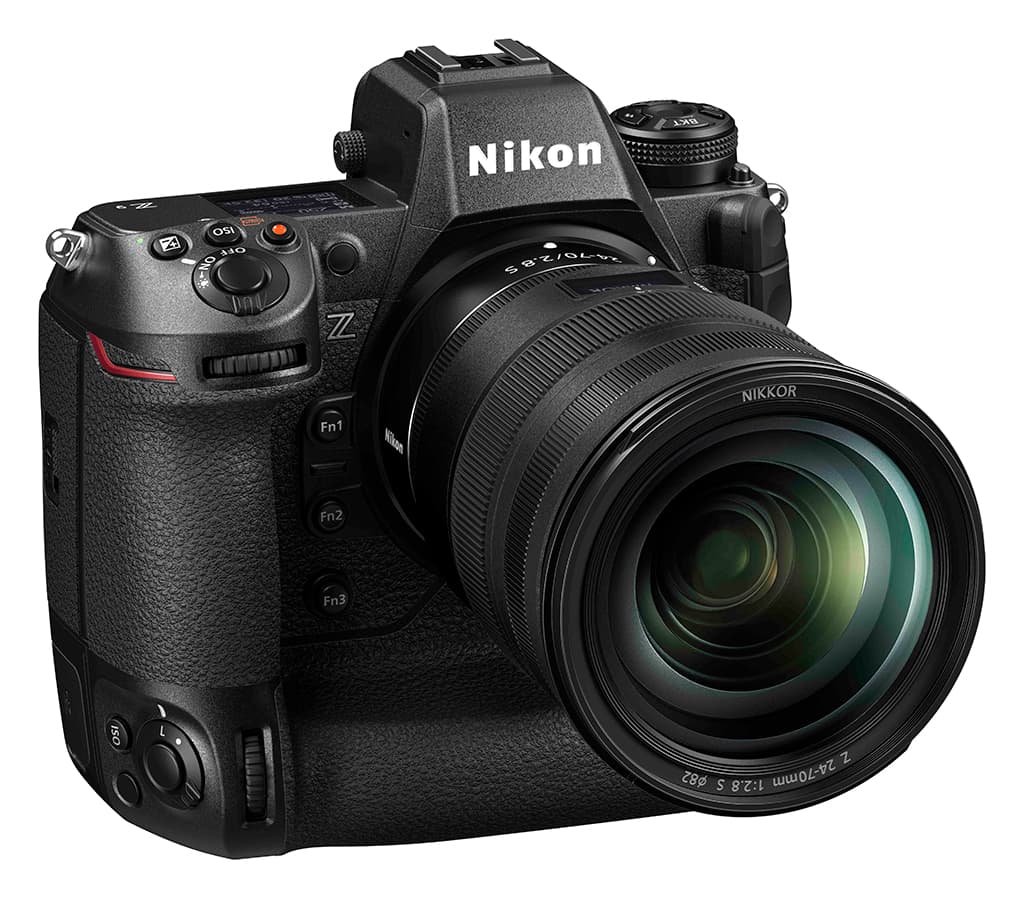
Why we like it
l Impressive speed and resolution
l Superb build quality
l Clever subject-recognition system
Nikon’s full-frame mirrorless flagship is another statement model, and one that can lay serious claim to being the most capable professional camera ever made – on paper at least. It combines an impressive 45.7MP resolution with rapid shooting: 20 frames per second in raw, 30fps in full resolution JPEG, and a remarkable 120fps when recording 11MP JPEGs. This all comes in a robust, weather-sealed body that Nikon says is just as tough as its pro-spec D6 DSLR.
Perhaps the Z 9’s key innovation is that it does without a physical shutter entirely, relying on an electronic shutter instead. It’s not the first camera to do this, but it’s the first that’s likely to get away with it without any serious problems, such as rolling shutter distortion, impractically slow flash sync or banding under artificial light.
This is made possible by the high readout speed of its newly designed stacked CMOS sensor. Both the Canon EOS R3 and Sony Alpha 1 use similar technology, but only Nikon has been brave enough to take it to its logical conclusion. Eliminating the shutter probably also explains the Z 9’s lower price; it’s a complex and costly component.
Another welcome innovation is that, unlike its competitors, Nikon’s autofocus system doesn’t have to be set to track a particular kind of subject. Instead, it’s capable of recognising humans, animals and vehicles at the same time. When it comes to design, the Z 9 resembles a slightly shrunken version of the D6, so existing Nikon users should take to it quickly.
It boasts a large, bright electronic viewfinder and a screen that can tilt for both landscape and portrait format shooting. This all adds up to seriously impressive-looking camera.
Panasonic Lumix GH5 II
l £1,499 l www.panasonic.com/uk
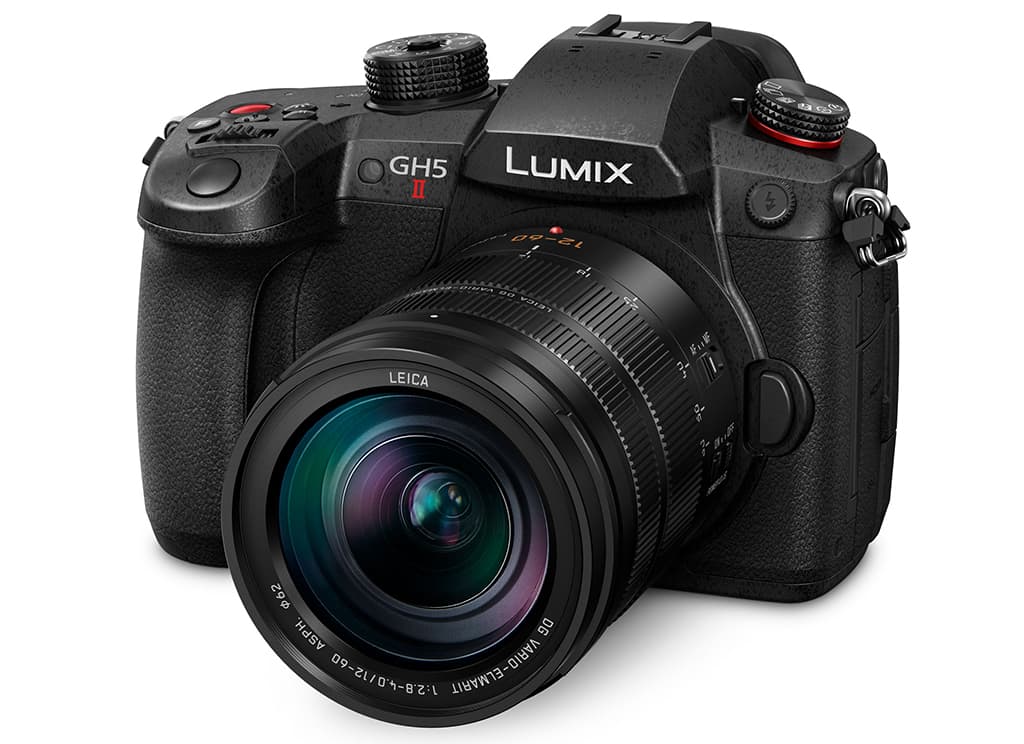
Why we like it
l Pro-level video features
l Improved autofocus
l Extremely effective in-body stabilisation
When it was released in 2017, Panasonic’s original GH5 was ahead of its time. It offered truly professional filmmaking features and performance in a compact body that also took great photos. With the GH5 II, Panasonic has made a series of sensible updates that maintain the camera’s appeal, adding new features based on the changing needs of the current breed of content creators working across multiple kinds of media.
With the GH line traditionally being focused more on video than stills, the main updates come in this area. Most notably, the camera gains the ability to live stream video over Wi-Fi to sites such as Facebook and YouTube, via either a smartphone, tablet or desktop computer. To help support this, it ships with a higher-capacity battery than the original GH5, and can now also be powered via its USB-C port.
There are some welcome updates for photographers too, with enhanced autofocus and more effective image stabilisation. The sensor forgoes an optical low-pass filter for improved detail capture and gains a new anti-reflection coating for improved image quality. The fully articulated rear screen also gains a boost in brightness and a broader colour gamut.
Together, these improvements maintain the GH5 II’s position as a tempting proposition for those who use their camera to record moving images just as much as stills. And for those who want more, there’s a GH6 on the horizon with an entirely new sensor, too.
Sony Alpha 1
l £6,499 l www.sony.co.uk

Why we like it
l Compact, lightweight body
l Astoundingly detailed viewfinder
l Remarkable resolution and speed
When Sony launched the Alpha 1 at the start of the year, its spec sheet read more like an impossible wish-list than a real product. The firm’s stated aim was to produce one single camera that could be used for any professional purpose. To this end, it’s capable of shooting 50.1MP raw files at 30fps using its silent, low-distortion electronic shutter and recording video in 8K resolution.
This is backed up by Sony’s extraordinary subject-tracking autofocus that does an incredible job of following erratically moving objects during continuous shooting. That’s not all there is to admire, either.
For composition, the Alpha 1 employs the world’s largest and most detailed electronic viewfinder, which combines a 9.44m-dot resolution with 0.9x magnification to provide a genuinely phenomenal viewing experience. The rear screen is a slight letdown in comparison, as it’s smaller and lower in resolution than its peers. It can also only tilt up or down, which suddenly looks rather dated. But on a more positive note, it now supports a fully integrated touch interface to complement the extensive physical controls.
Other key features include five-axis in-body image stabilisation that works with every lens to get sharper images handheld. This also supports two different pixel-shift multi-shot modes which are capable of giving images up to 200MP in resolution, as long as the subject is completely static. There’s also pro-spec connectivity on board, both wireless and wired.
In combination with Sony’s extensive FE lens range, there really is barely anything that the Alpha 1 can’t do. It’s a seriously pricey camera, but it’s not difficult to understand why.
Sony Alpha 7 IV
l £2,400 l www.sony.co.uk

Why we like it
l High resolution for the price
l Advanced autofocus
l Much-improved handling
Sony hasn’t just turned out a high-end flagship this year, but has also revamped its popular enthusiast all-rounder. Compared to its already excellent predecessor, the Alpha 7 IV gains a whole array of updates and improvements, everywhere you look. Its headline new feature is a 33MP full-frame sensor, which provides excellent image quality with just that bit more detail than its 24MP or 20MP rivals.
But it also gains Sony’s most sophisticated autofocus system yet, with extremely capable subject recognition that works across both stills and video shooting. Despite the higher resolution, it’s still capable of shooting at a pacy 10fps, and if you’re prepared to buy a (pricey) CFexpress type A card, it should keep up that speed almost indefinitely.
There are plenty of welcome operational updates, too. A larger grip and revised controls provide substantially improved handling, especially for photographers who regularly use large telephoto lenses. The addition of a fully articulated screen provides increased compositional flexibility compared to the previous tilt-only unit, while the higher-resolution 3.68m-dot viewfinder benefits from an improved live view feed with fewer artefacts. Last but not least, updated menus and the addition of a full touch interface help make the camera quicker and more intuitive to use.
Crucially, the A7 IV offers fantastic image quality, delivering plenty of detail and dynamic range at low sensitivities and perfectly usable files up to ISO 25,600. It’s a hugely tempting upgrade both for users of Sony’s older Alpha 7 models, and DSLR photographers considering a switch to mirrorless cameras.
Lenses
Canon RF 100mm F2.8L Macro IS USM
l £1,479 l www.canon.co.uk
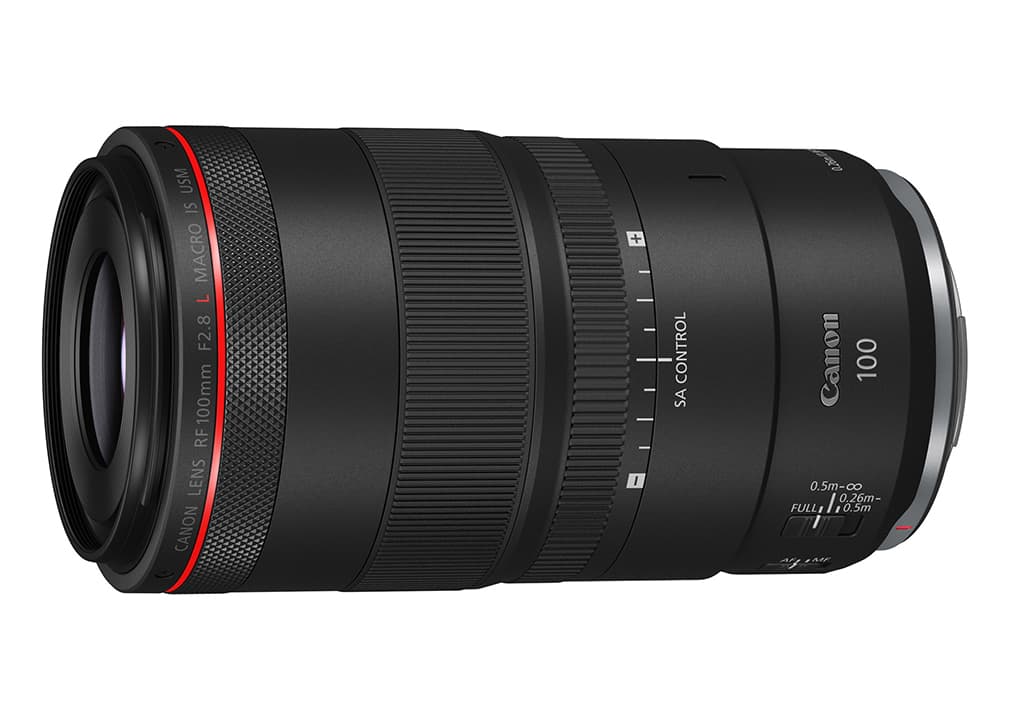
Why we like it
l Absolutely superb optics
l Unusually high 1.4x magnification
l SA control dial for portraits
While other manufacturers have tended to build up their mirrorless lens ranges by replicating their most popular DSLR designs, Canon has consistently been more innovative. Despite being named almost identically to its EF-mount predecessor, the firm’s new RF-mount 100mm f/2.8 macro gains a number of intriguing new features, but with a price tag to match.
Firstly, instead of the usual life-size magnification, this lens provides 1.4x. In practice this equates to being able to focus on a subject measuring just 26mm x 17mm, rather than 36 x 24mm, equating to half the area. Secondly, a new ‘SA Control’ dial allows adjustment of spherical aberration, which allows out-of-focus background or foreground blur to be smoothed, with a concomitant softening of in-focus detail.
This isn’t necessarily a feature you’re likely to exploit for close-up shooting, but it’s very useful for portrait photography, which is a common second purpose for such lenses. Used carefully, it allows users to take the edge off the lens’s biting sharpness for more flattering images.
In other respects, this offers everything we’d expect from Canon’s L-series, with sensational optics, rapid and accurate autofocus, and effective image stabilisation. Sure it’s very expensive, but it’s an absolutely superlative lens.
Nikon Nikkor Z 40mm f/2
l £249 l www.nikon.co.uk
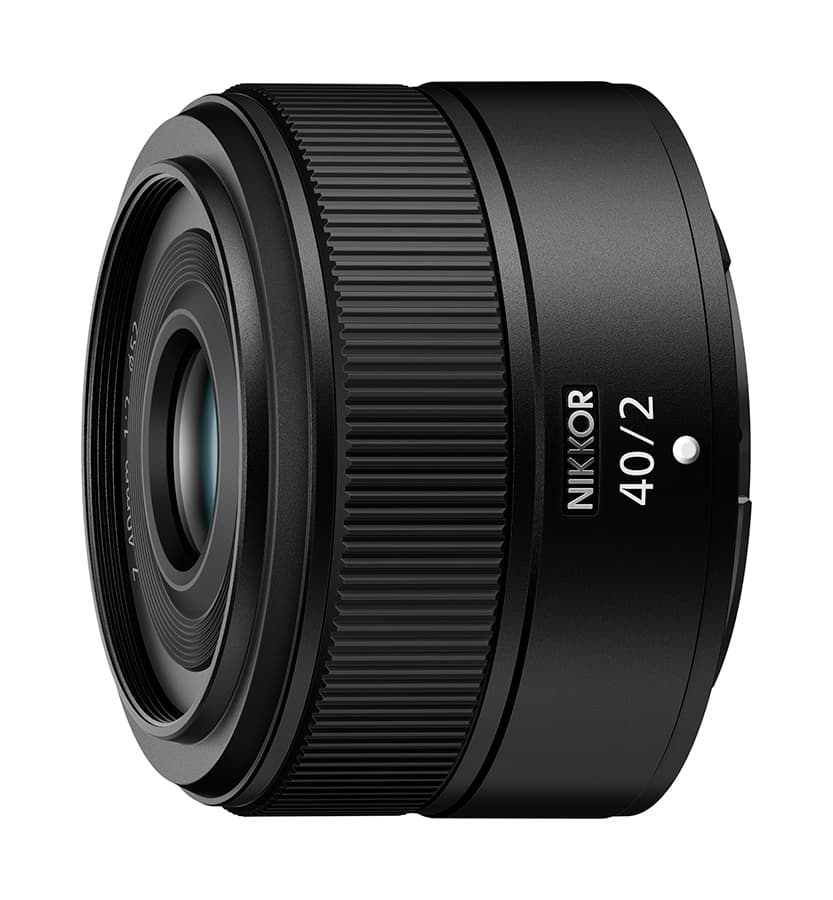
Why we like it
l Compact size and light weight
l Very affordable
l Gives very natural-looking images
Sometimes it’s easy for us to get all excited by all the high-end, expensive kit and forget about more affordable options. Having filled out its lineups of premium f/1.8 primes and f/2.8 and f/4 zooms for its full-frame Z-system mirrorless cameras, Nikon has quietly gone about introducing a new range of lenses that are small, lightweight and won’t break the bank.
The initial offerings in this series are the £249 Nikkor Z 40mm f/2 and the Nikkor Z 28mm f/2.8, which was initially offered in an SE version with the retro-styled Nikon Z fc. At £249 apiece, they’re not only the most affordable Z-mount optics to date, but also the cheapest lenses offered by any mainstream maker in 2021. Nikon’s roadmap indicates that a couple more of these compact primes should appear some time next year.
While some photographers may find 40mm to be an unexpected focal length, it’s seen a resurgence in popularity over the past few years, with a variety of such lenses appearing from the likes of Sigma, Sony, and Zeiss. With a view halfway between the more common 35mm and 50mm options, many photographers find that it offers an extremely natural-looking perspective on the world.
Nikon’s 40mm f/2 is a relatively compact, lightweight optic, at 46mm in length and just 170g. It exploits an internal-focus design for quick AF, while marrying decent sharpness with attractive out-of-focus blur. It may not technically be the best lens in Nikon’s range, but it’s a real pleasure to shoot with.
Olympus M.Zuiko Digital ED 8-25mm F4 Pro
l £899 l www.olympus.co.uk
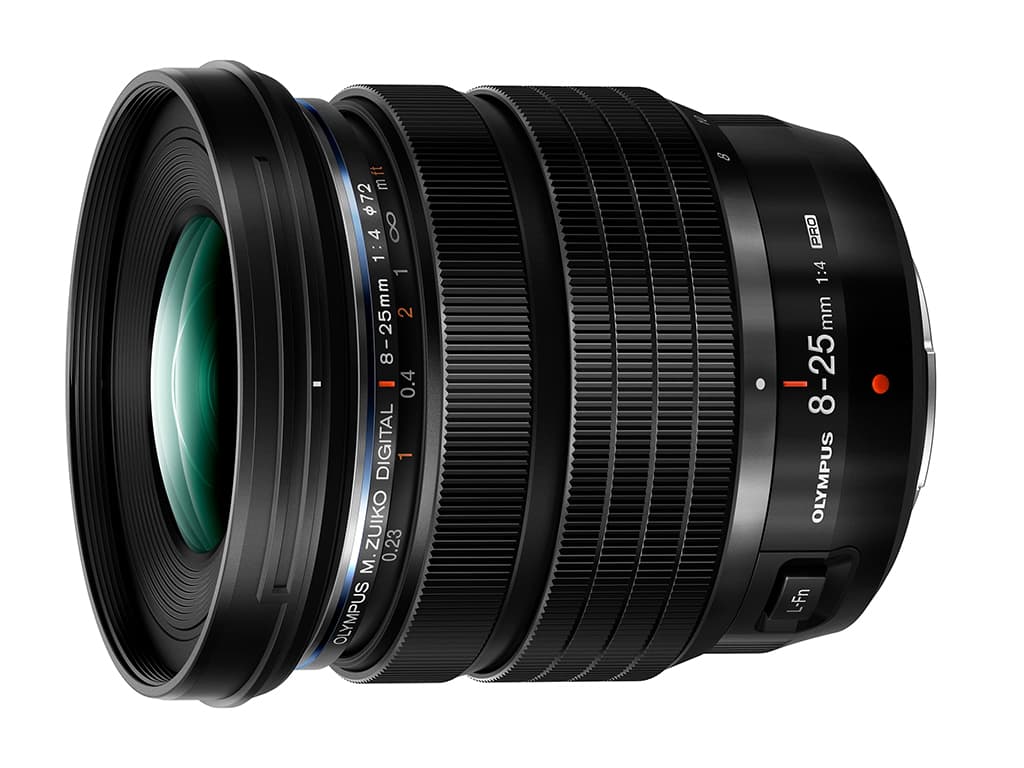
Why we like it
l Unusually versatile zoom range
l Impressive close-up capabilities
l Retractable design
Towards the end of 2021, we bid a sad farewell to the Olympus brand, with new cameras and lenses to be labelled ‘OM System’ from now on. This means that the 8-25mm F4 Pro has the distinction of being the last-ever Olympus lens – and what a way for the famous old name to bow out.
With its 16-50mm equivalent range, in a way this is a difficult lens to categorise. It can be thought of either as a wideangle zoom with an unusually extended long end, or as a standard zoom that goes much wider than usual.
Either way, it’s an incredibly versatile lens, especially given that its close-up capability is really impressive, too. Unlike the wider 7-14mm Micro Four Thirds zooms, it’ll also accept screw-in filters 72mm in diameter.
As usual for the M.Zuiko Pro range, optically the lens performs very well indeed, delivering images that are a match for the other premium wideangle zooms in the Micro Four Thirds system. Its build quality is of the expected high standard, too, with a push-pull manual focus clutch, customisable L.Fn button and full weather-sealing.
The zoom mechanism employs a retracting design that keeps the size down for transport. For certain photographers shooting subjects such as landscapes or architecture, it’s a uniquely versatile optic that could easily stay on the camera most of the time.
Sigma 35mm F1.4 DG DN Art
l £749 l www.sigma-imaging-uk.com
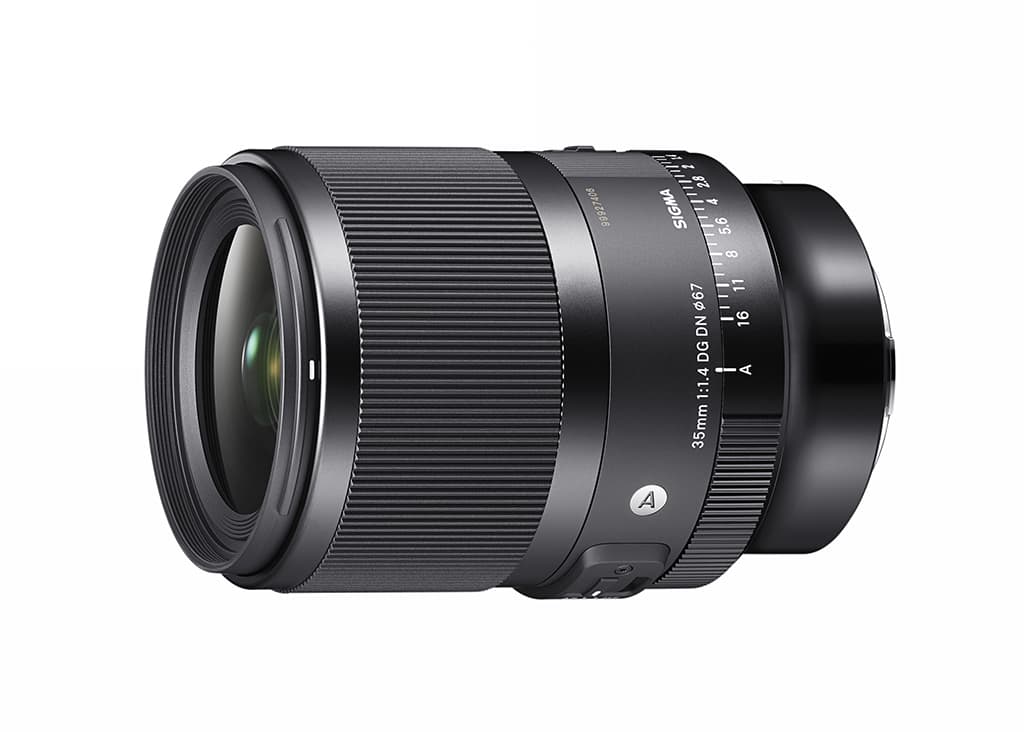
Why we like it
l Fantastic value for money
l Includes an aperture ring
l Weatherproof construction
Back in 2012, Sigma introduced its first lens in a new ‘Art’ series, with the 35mm f/1.4 DG HSM garnering wide acclaim for its step up in quality compared to the firm’s previous offerings. Since then, though, the market has substantially shifted from DSLR to mirrorless. So this year, Sigma has introduced an all-new version for Sony E-mount and L-mount full-frame cameras.
As indicated by the ‘DN’ in the name, this lens has been entirely rebuilt to cater for the needs of mirrorless users. Its all-new optical formula employs 15 elements in 11 groups, in contrast to its predecessor’s 13-element, 11-group design. Sigma has also included an array of elements made from special glass to minimise aberrations and maintain sharpness into the corners of the image, even at large aperture settings.
Photographers who regularly shoot outdoors will be pleased to hear that the lens boasts weather-sealed construction, while a fluorine coating on the front glass should repel raindrops and fingerprints. An aperture ring on the barrel clicks at one-third stop steps down to the f/16 minimum, and also has an A position to pass control to a dial on the camera body. Autofocus is quiet, rapid and accurate.
Crucially, the lens delivers impressive image quality. It’s decently sharp wide open and gives really excellent results when stopped down a bit, with barely any troublesome aberrations. At half the price of the Sony equivalent, it’s great value for money too. We’d love to see Sigma make it in Canon RF and Nikon Z mounts.
Sony FE 50mm F1.2 GM
l £2,099 l www.sony.co.uk
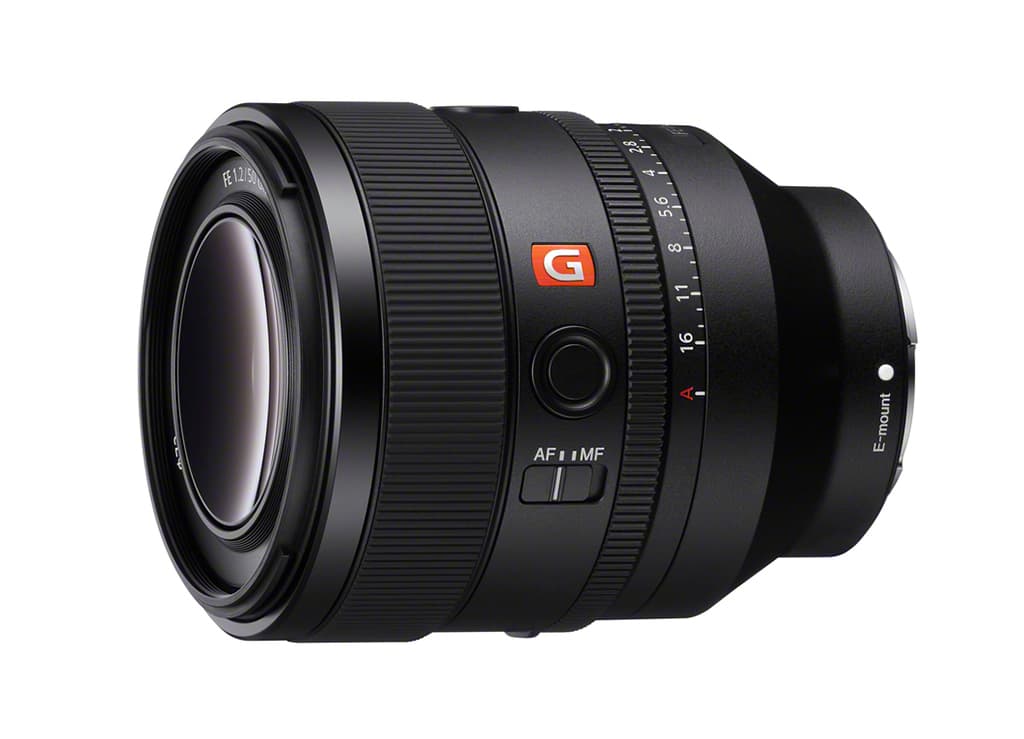
Why we like it
l Ultra-fast maximum aperture
l Sensational image quality
l Comprehensive set of controls
Sony began the year with a flurry of lens launches, including an all-new 35mm f/1.4 that joined its premium G Master range, and a lovely set of compact metal-barrelled primes. More recently it’s produced an updated 70-200mm f/2.8. We’ve been seriously impressed by all these lenses, but by our reckoning, the FE 50mm F1.2 G Master surpassed them all.
In a way, this lens feels like a direct riposte to Canon and Nikon, given that both firms have gone out of their way to suggest that their larger-diameter mirrorless mounts allow the construction of more exotic large-aperture optics. As if to press the point, both also made 50mm f/1.2 lenses for their full-frame mirrorless systems before the f/1.4 designs we’d probably have expected first.
But as it turns out, Sony’s 50mm f/1.2 is the smallest, lightest and least expensive of the three. Despite this, it boasts a full array of controls, including a pair of AF-stop buttons and an aperture ring which can be switched between clicked and clickless operation.
Of course what really matters are the images, and in this respect it excels. Impressive levels of detail are recorded across the frame, even at f/1.2, with out-of-focus backgrounds being rendered with a soft, attractive blur. Barely any optical aberrations are visible and autofocus is quick and unerringly accurate.
For photographers wishing to shoot portraits with shallow depth of field and beautifully blurred backgrounds, it’ll deliver really wonderful results.
Tamron 17-70mm F/2.8 Di III-A VC RXD
l £779 l www.tamron.eu/uk
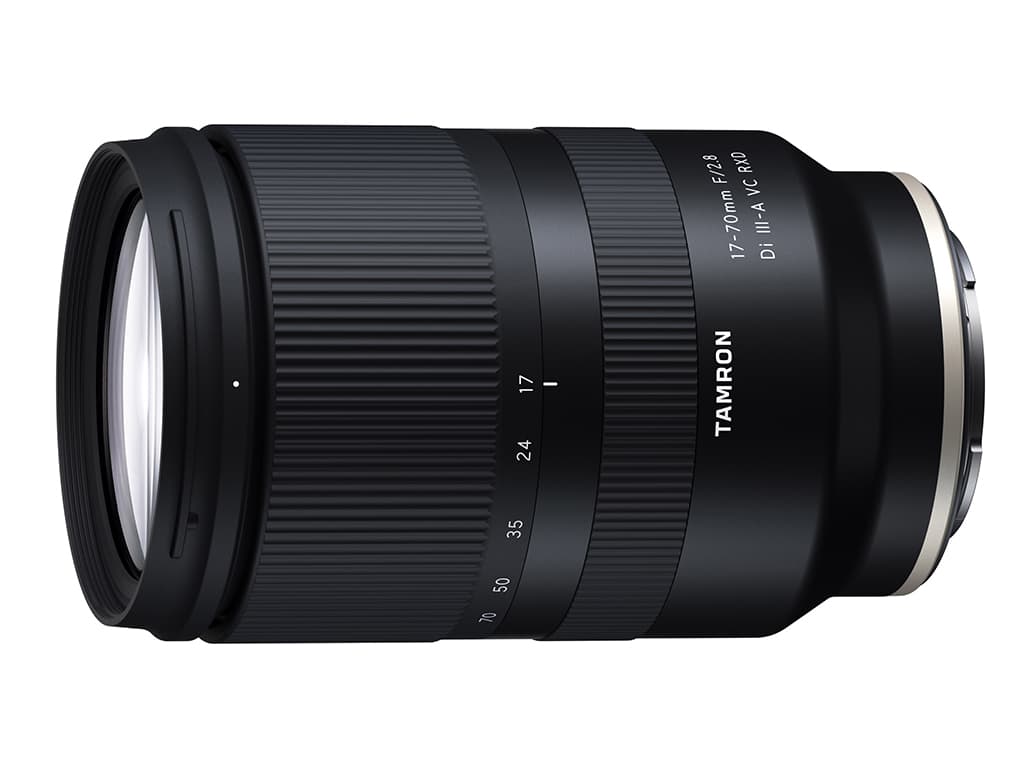
Why we like it
l Extremely handy focal length range
l Constant large maximum aperture
l Effective optical stabilisation
In the current camera market, it often feels like all the attention is being paid to full-frame mirrorless, and smaller formats have been neglected. This is a shame, as they still provide the potential for smaller and lighter set-ups. Thankfully the third-party lens makers haven’t entirely forgotten this and have introduced a few interesting APS-C optics too.
When Tamron’s 17-70mm f/2.8 VC appeared, it instantly looked like the most tempting standard zoom yet for Sony’s A6000-series cameras, thanks to its broad focal-length range and large maximum aperture at a very reasonable price. In practice it delivers, too, with a combination of excellent optical quality, rapid autofocus, and weather-sealed construction.
Crucially it also features very effective optical stabilisation, which is important given that all but the most expensive of Sony’s APS-C cameras lack in-body stabilisation. If there’s one reservation, though, it’s to do with size.
This is the largest standard zoom designed specifically for APS-C E-mount cameras, and some might find it an awkward match to Sony’s small rangefinder-style bodies. Aside from that, though, it’s an easy recommendation.
As a post-script, one very welcome trend this year has been Fujifilm’s apparent decision to open to third-party lens makers, with both Tamron and Samyang releasing their first X-mount optics. We’d love to see this 17-70mm f/2.8 in X-mount, too.
Further reading

